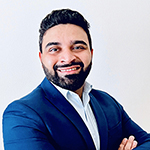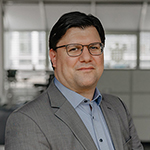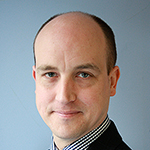Changing Communications Tack at Mobile World Congress
The last time I attended Mobile World Congress, it was before the iPhone had been launched in Europe. The world of telecoms – and PR – was very different. Pretty much every publication in the region sent a host of tech reporters, and the job of the PR was hosting 30+ briefings on stands where booth babes were still a standard accessory.
Fast forward to 2024, and comms at MWC is a very different story. Analysts’ attendance looks set to outweigh journalists by a ratio of 2:1; many national journalists who attended last year aren’t planning to return this year, and one of the world’s largest news agencies doesn’t intend to send any reporters for the first time, as editorially they cannot justify the cost.
For the tech trade journalists who are on the ground, many of them have been sponsored to attend by one vendor, which pretty much monopolises their whole diary. With this limited pool of journalists, alongside an increasing list of exhibitors all vying for attention, it puts comms professionals in somewhat of a quandary.
How communicators can make the most out of MWC
- Consider timings on news: There are two schools of thought on issuing news at mega conferences like MWC – the pro argument dictates that having a strong product/personnel/business announcement is key to demonstrating relevancy among industry peers and to driving inclusion in coverage from on-site journalists. The flip argument, which I increasingly support, is that unless you have something at the level of a revolutionary new handset, the news gets lost. You’ll get a much bigger ROI going out before or after the event.
- Briefing objectives: With a limited number of journalists on site, the key is to be very strategic about which ones to approach and what you offer. With horrifically packed schedules, the offer needs to be solid. A spokesperson needs to give them something that makes the time investment worthwhile – in almost every scenario, a punchy viewpoint is much more interesting than a monologue on a company widget getting its umpteenth upgrade…
- Beyond earned: Virtual networking is just as important; so much of what happens at MWC will be seen through a digital lens of LinkedIn updates and connecting via the MWC app. It is imperative that senior stakeholders are supported with guidance on content that is maximised for industry engagement and shareability.
- Be in the know: There’s a host of wider MWC comms opportunities if you take the time to get in the know, before the show. Opportunities range from annual traditions like Swedish Beers, to executive dinners being run in conjunction with top tier publications (no PRs allowed!), vendor press networking events and drinks receptions with the likes of the Department for Business and Trade. Spending time to understand and prioritise activities can open a range of future opportunities.
In this new era of comms, I am excited to get back to Barcelona to see first-hand just how much MWC has changed in 15 years. Crucially, as we all embrace the shift to working with colleagues and clients ‘IRL’ I am looking forward to having some facetime and networking with some old (and new) faces – if you are also making the trip it would be great to hear from you so we can swap stories on MWC past and present, and the impact of comms technologies and strategies changing tack!


















